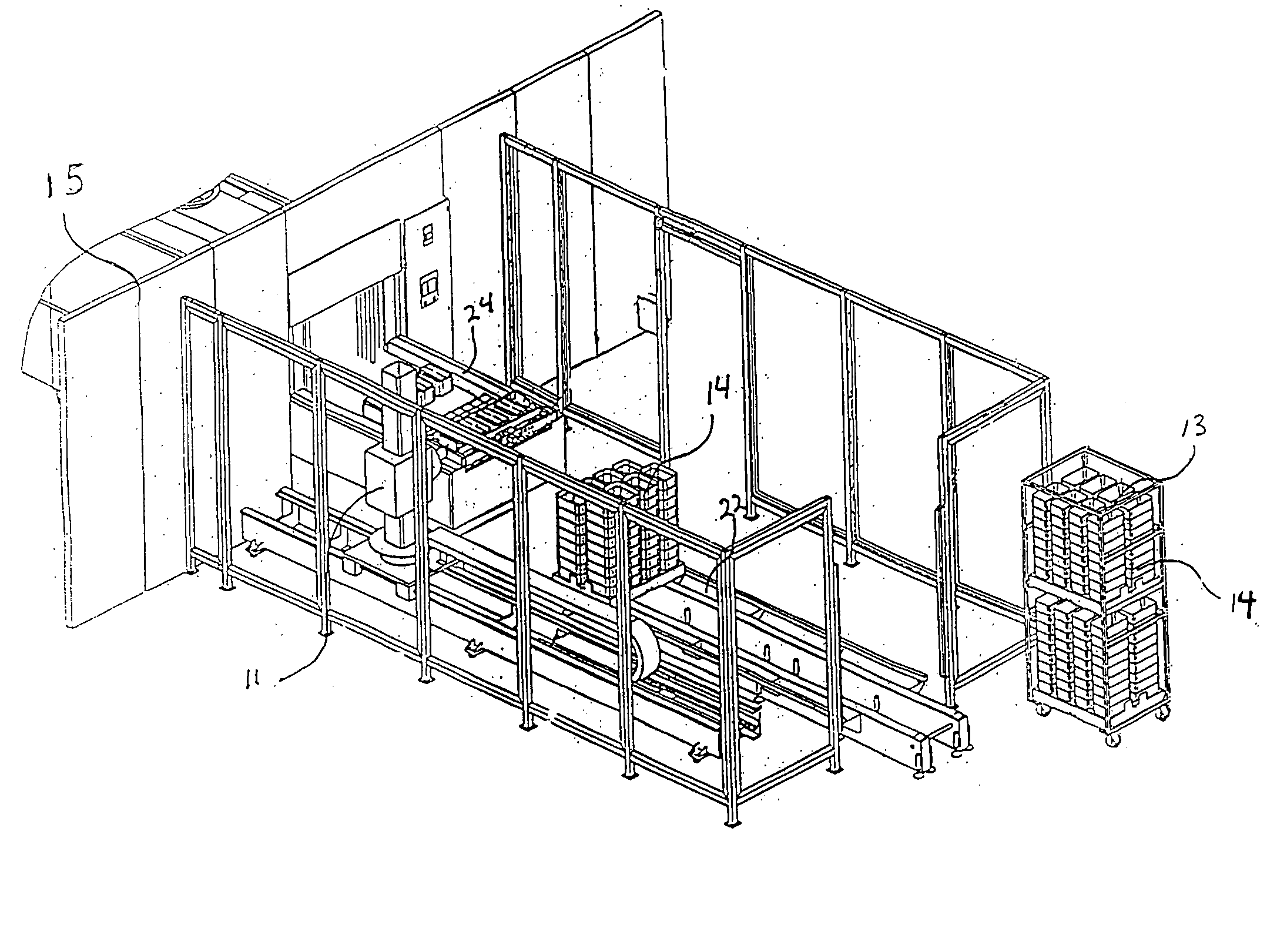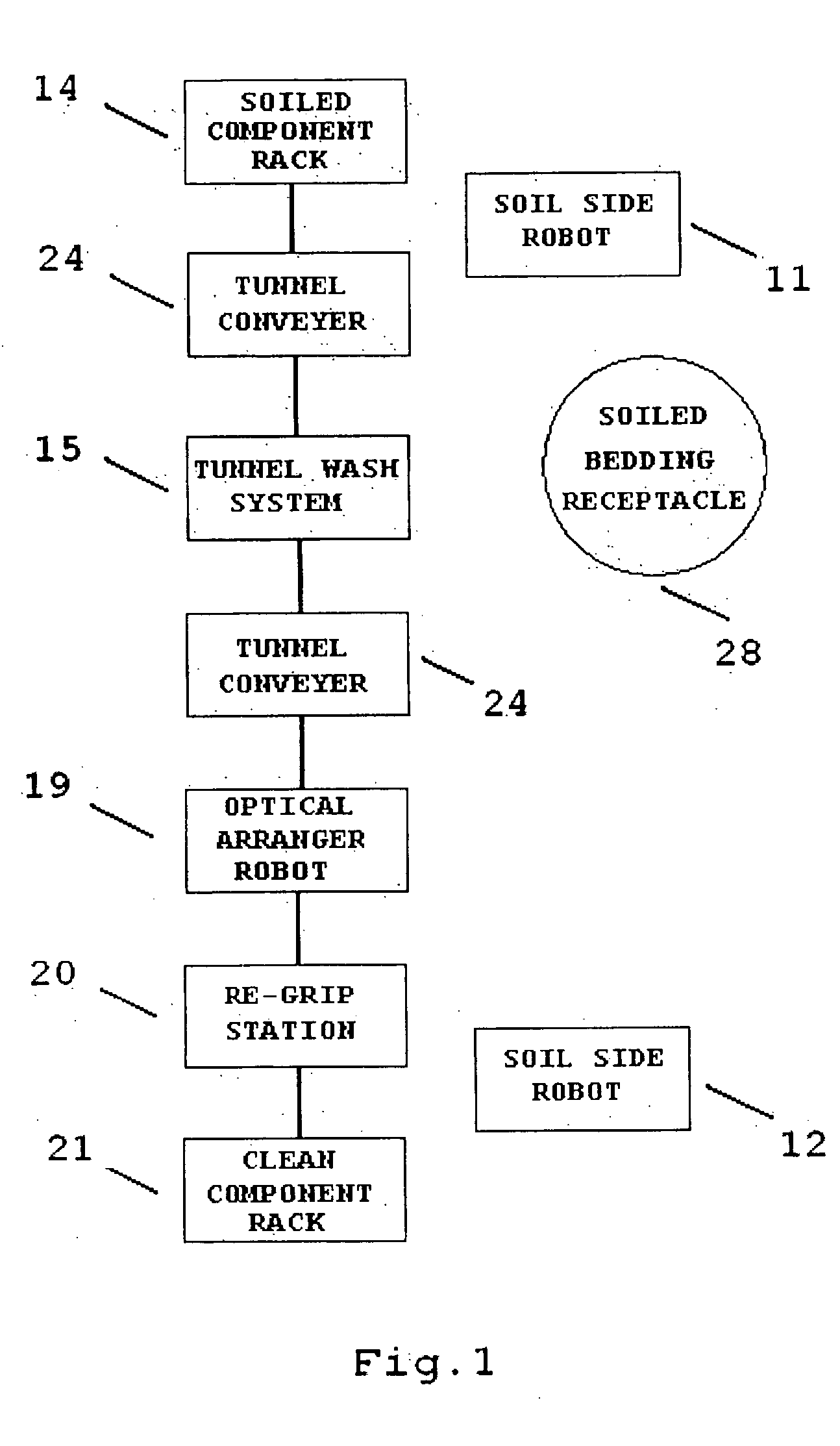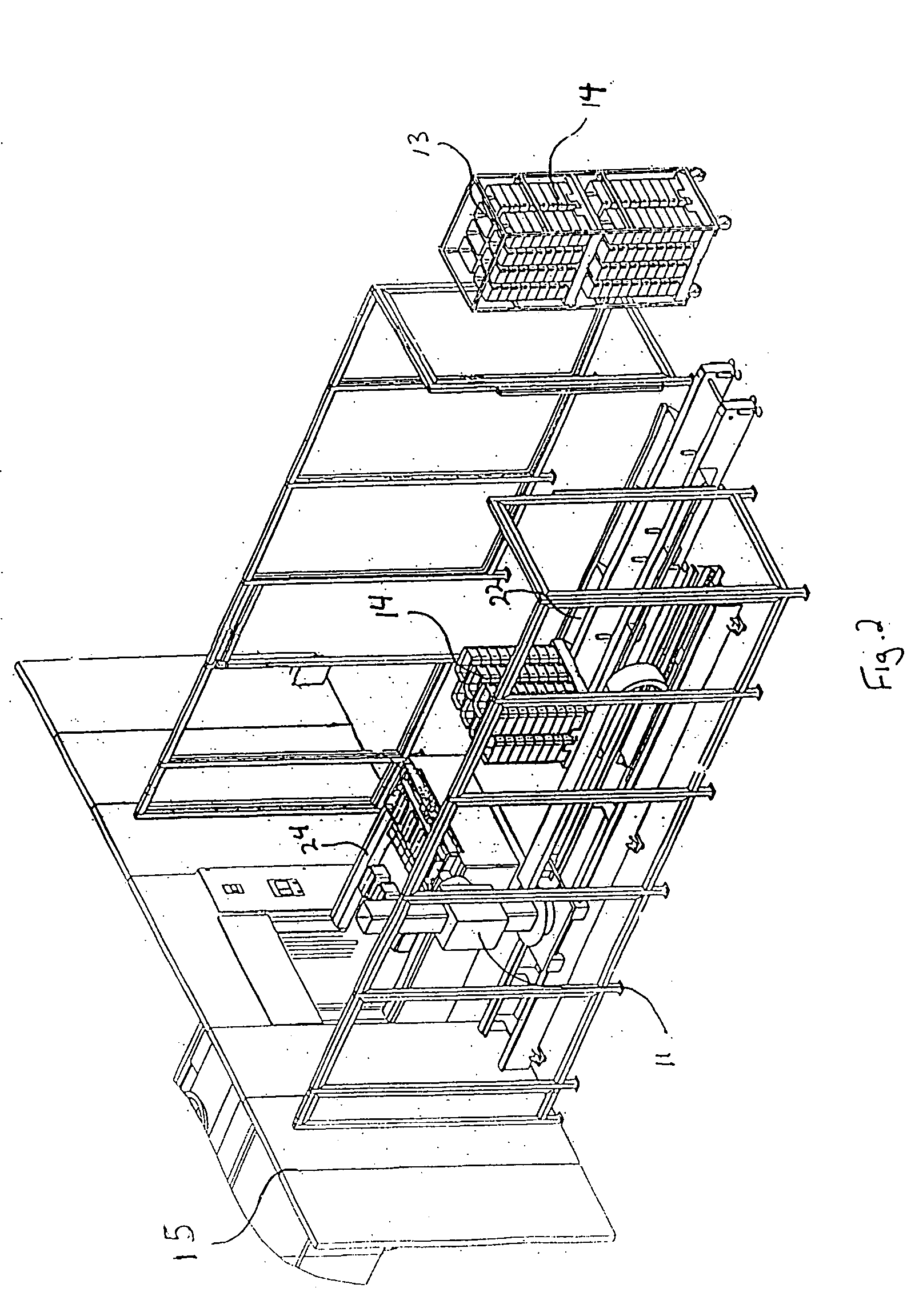Automated cage cleaning apparatus and method
a cage cleaning and automatic technology, applied in the direction of cleaning process and apparatus, chemistry apparatus and processes, cleaning using liquids, etc., can solve the problems of complicated automatic removal of cage bottoms from conveyers, skewed cage bottoms on conveyers, and the need for frequent cleaning of cages, etc., to achieve more versatility in design
- Summary
- Abstract
- Description
- Claims
- Application Information
AI Technical Summary
Benefits of technology
Problems solved by technology
Method used
Image
Examples
Embodiment Construction
[0021] Referring to FIGS. 1-3, a flow diagram and perspective views of the improved apparatus and method for cleaning animal cages are shown. The apparatus includes a pair of loading / unloading robots, referred to hereinafter as the soil side robot 11, and the clean side robot 12. Additionally, the apparatus further comprises optical arranger robot 19. In operation, the soiled cage components arrive at the cleaning area on a component cart 13, or any suitable device for transporting a plurality of soiled components. The cart further comprises at least one soiled component rack 14 holding soiled cage bottoms, wherein the rack of soiled cage bottoms is attachable to an in-feed conveyer 22. Once the rack 14 is securely attached upon the in-feed conveyer 22, it advances toward soil side robot 11. The soil side robot 11 grasps a plurality of cage bottoms from the rack 14, inverts the cage bottoms over a soiled bedding receptacle 28 (FIG. 1), or any device suitable for receiving the soiled...
PUM
 Login to View More
Login to View More Abstract
Description
Claims
Application Information
 Login to View More
Login to View More - R&D
- Intellectual Property
- Life Sciences
- Materials
- Tech Scout
- Unparalleled Data Quality
- Higher Quality Content
- 60% Fewer Hallucinations
Browse by: Latest US Patents, China's latest patents, Technical Efficacy Thesaurus, Application Domain, Technology Topic, Popular Technical Reports.
© 2025 PatSnap. All rights reserved.Legal|Privacy policy|Modern Slavery Act Transparency Statement|Sitemap|About US| Contact US: help@patsnap.com



